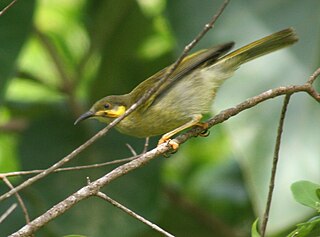
The Polynesian wattled honeyeater or the eastern wattled honeyeater, is a species of bird in the honeyeater family Meliphagidae. It was considered conspecific with the Fiji wattled honeyeater and the kikau.

The green-backed honeyeater is a species of bird in the family Meliphagidae. It is monotypic within the genus Glycichaera. It is found in the Aru Islands, New Guinea and northern Cape York Peninsula. Its natural habitat is subtropical or tropical moist lowland forests.

The yellow-tinted honeyeater is a species of bird in the family Meliphagidae. It is found in Australia and Papua New Guinea. Its natural habitats are subtropical or tropical moist lowland forests and subtropical or tropical mangrove forests.

The yellow honeyeater is a species of bird in the family Meliphagidae. It is endemic to Australia.

The bridled honeyeater is a species of bird in the family Meliphagidae with distinctive rein-like markings on its face that is endemic to northeastern Queensland. It is found in subtropical or tropical moist upland forests and subtropical or tropical rainforests, usually above 300 meters. In winter, it descends to lower forests including mangroves, and can sometimes be seen in more open habitats.

The fuscous honeyeater is a species of bird in the family Meliphagidae. It is endemic to eastern Australia, where it inhabits subtropical and tropical dry forests.

The obscure honeyeater is a species of bird in the family Meliphagidae. It is found in New Guinea.
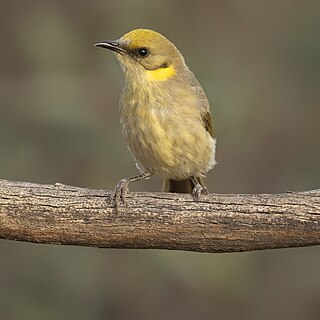
The grey-fronted honeyeater is a species of bird in the family Meliphagidae. It is endemic to Australia. Its natural habitat is Mediterranean-type shrubby vegetation. The grey-fronted honeyeater was originally described in 1841 by English ornithologist John Gould as Lichenostomus plumulus. It was moved to the genus Ptilotula after a molecular phylogenetic analysis, published in 2011, showed that Lichenostomus was polyphyletic.
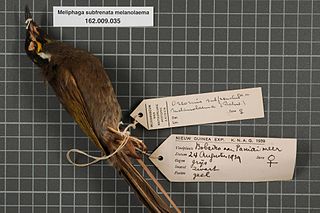
The black-throated honeyeater is a species of bird in the family Meliphagidae. It is found in New Guinea. Its natural habitat is subtropical or tropical moist montane forest.
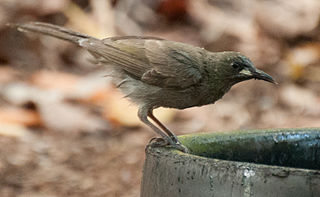
The white-gaped honeyeater is a species of bird in the family Meliphagidae. It is endemic to Australia.

The varied honeyeater is a species of bird in the family Meliphagidae. It is found in coastal areas of New Guinea and eastern Cape York Peninsula. Its natural habitat is subtropical or tropical mangrove forests.

The scaly-crowned honeyeater is a species of bird in the family Meliphagidae. It is endemic to Indonesia, where it occurs in the Lesser Sunda Islands. Its natural habitats are subtropical or tropical moist lowland forests and subtropical or tropical moist montane forests.

The sooty honeyeater is a species of bird in the family Meliphagidae. It is found in the New Guinea Highlands. Its natural habitat is subtropical or tropical moist montane forest.
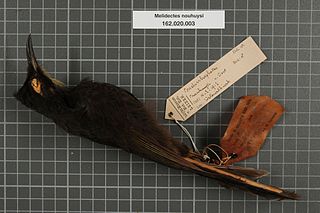
The short-bearded honeyeater is a species of bird in the honeyeater family Meliphagidae. It is found mainly in West Papua. Its natural habitat is subtropical or tropical moist montane forests.
The long-bearded honeyeater, is a bird in the honeyeater family Meliphagidae.
Gilliard's honeyeater or the Bismarck honeyeater, is a bird species in the family Meliphagidae. It is the only species placed in the genus Vosea. It is endemic to New Britain. Its natural habitat is subtropical or tropical moist montane forests.

The yellow-cheeked tit is a species of bird in the family Paridae.

The Kadavu honeyeater is a species of bird in the family Meliphagidae. It is the only species placed in the genus Meliphacator. It is endemic to the islands of Kadavu in Fiji. Its natural habitats are subtropical or tropical moist lowland forests and tropical mangrove forests.

The Tanimbar friarbird is a species of bird in the family Meliphagidae. It is endemic to the Kai and Tanimbar Islands, Indonesia.
The giant honeyeater or duetting giant honeyeater is a species of bird in the family Meliphagidae. It is endemic to Fiji.


















